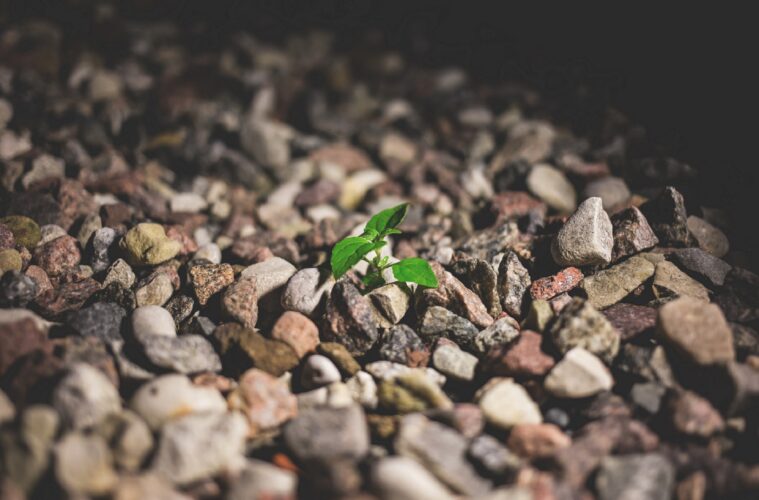While the coronavirus has caused immaterial and material loss all over the globe, its regulations have had consequences on the individual lives for people. This article is not about the pros and cons of regulations, much more it analyses the situation we currently live in as a potential for a development towards peace and transrational awareness. Laura Condrau wrote her Master’s thesis on Transrational Peace Philosophy while the coronavirus started to keep the world busy, so her sight was sharpened for the connection between that virus and transrational peaces.
Corona as a Chance to become aware of Inner Violence
It was the start of lockdown in Switzerland when I started to write my Master’s thesis in Peace Studies. “Perfect”, I thought at first, “I am living in a yurt, in a community in the countryside with a huge, wild garden next to a river, and springtime is just starting. What can be more peaceful than writing my academic piece at home?” As beautiful the outside conditions seemed, the dense, locked-down community life gave me once more the possibility to get into contact with my own violence, my destructive feelings, thoughts and actions. Therefore the lockdown situation was not only a possibility for quiet and creative retreat, but also for the recognition – and possibly the transformation – of my own violent behavioural patterns. The cycle of violence lies deeply embedded within ourselves and the transformation of internal conditioning is often a life-long endeavour. It is not a coincidence that the preamble to the UNESCO charter is: Since wars begin in the minds of men, it is in the minds of men that the defences of peace must be constructed.
I do not want to scold anyone, and surely not myself. My inner violence is a natural part of my human condition. Yet in order to transform it, I first have to acknowledge and become aware of it. How can I know peace if I don’t know violence? Following the works of John Paul Ledearch and Wolfgang Dietrich, in my Master’s thesis, I defined the term inner violence as a supplementation to the Galtungian forms of violence: direct, structural and cultural violence. Unlike these, inner violence points at the intrapersonal dimension of violence, a person’s harmful thoughts, feelings and behavioural patterns. These patterns are often discussed in humanistic psychology and can also be understood as ‘ego defence strategies’. These are strategies that humans naturally learn in their early childhood. They are being learned in order to survive within a bodymind, as human being understood as a unity of body and mind, that is not yet capable of taking care of its own. Normally adults use ego defence mechanisms unconsciously on a daily basis. This is why they are called blind spots. Different people I encountered in my life have different ways of becoming aware of them. Sometimes it is our nearest people who are making us aware. My own best tool to become aware of my defence mechanisms is my body. My body feels tense and hard, when I am in my defensive mode, and loose and soft when I am in my accepting mode.
Peace in Diversity through a Post-Egocentric Consciousness
During the situation we were and still are in, I probably wasn’t the only one who got aware of a lot of harm in my surroundings. In my circle of friends, my family as well as in the public media I witnessed a vast amount of direct violence between people with different opinions. The omni-present themes were mask-wearers against non-mask-wearers, vaccination-supporters versus non-vaccination supporters as well as Blacks against Whites. And in spite of all the factual discussion on the right-and-wrongs, as a peace worker I wondered: When can we come to a dialogue with respect for the diversity of opinions?
I must admit, sometimes I struggle to communicate calmly if I think very differently from the people I talk to, especially if they are many, and if they come from my nearest circles, where the levels of trust, authenticity and intimacy are higher. Heesoon Baai, a professor at the Faculty of Education at the Simon Frazer University, claimed, too, that despite our world’s diversity, most humans struggle to live in it. The reason for this is the human ego, that fears everything that is different, new or unknown. Thus, accepting difference starts with letting go of ego. This includes a profound transformation from a egocentric to a post-egocentric worldview. Baai’s claim is that if we want peace, we need to let go of ego and move into a consciousness that understands the other not as different or separate from oneself, but as fundamentally interconnected with oneself. In my view, this implies exactly this shift in peace work, which the transrational peace philosophy is promoting.
The term trans-rational does not negate the rational, but it recognises it and goes beyond it. Likewise transrational peace philosophy does not exclude but it integrates a variety of different concepts to peace. It is based on knowledge acquired by humanistic psychology, ethnology and political science. One key aspect of transrational peace philosophy is elicitive conflict transformation. According to this approach, an outer happening – such as a fight between people with different opinions – always corresponds to a corresponding blockage within the individual. And it is the transformation of this blockage that will lead to a lasting change on the outside. For this reason, elicitive conflict transformation suggests bodily approaches, such as dance, breathwork, martial arts or meditation. Yet in order to apply this way of conflict transformation we must more radically acknowledge the origins of violence within the human himself. Baai’s argumentation also implies that we have to let go of ego defence strategies, if we want to move to a post-egocentric worldview in which we embrace difference.
Truly Living Diversity
I know about my own inner violence. And I got to know about it during the lock-down in the dense community life. In my view, the situation we are in now, with all its harm and violence, may be a chance to become more aware of these intrapsychic mechanisms that are so deeply ingrained within us. At least, this is what happened to me. During the lock-down I was confronted with quarrels among and in my nearest people, my friends and family. At the same time I became more aware of what behaviour, thoughts or emotions I would like to let go.
For example: The relationship between me and my sister was always somewhat tense because we are people with very different opinions and lifestyles. On Easter weekend 2021, I was able to talk to my sister without a defensive mode, because I got aware of my tense body. As I got aware of my tense state, I let go and switched into an accepting one. I pointed out our destructive communication as well as the importance of acknowledging our differences. The result was a moment of connection between us. We now have more acceptance for our diverse lifestyles and embrace our sisterhood despite our differences. Surely, not my whole life is at peace yet, and there will surely be moments in which I will be challenged again (in relation to my sister or in others). But I see this experience as an example of the importance of becoming aware of our inner violences.
Just like Heesoon Baai and many others, I am convinced that once we truly acknowledge the origin for peace lying in the inner aspects of a conflict, there is a whole journey following. It is a journey of acceptance, of letting go and one towards a transrational worldview. It is a journey in which we can be who we are without having to scold or devalue those who are not like us, while still being in connection and open for mutual dialogue. It is a journey in which we can learn to live diversity without fear. And crises can help us to start these journeys.
Image Sources:
- Plant growing between the rocks 2 by Joanna Malinowska: freestocks.org

